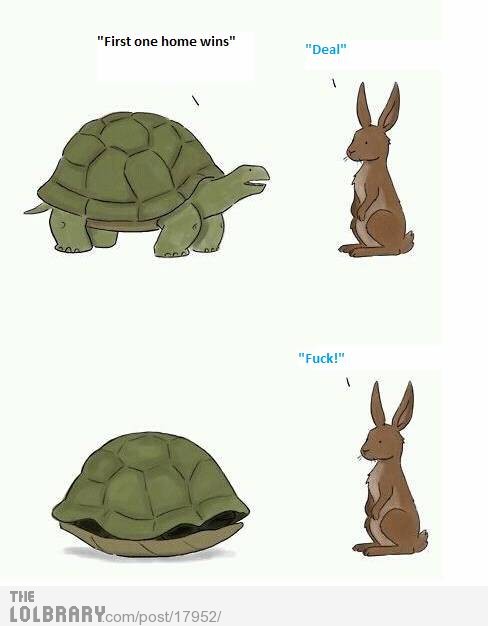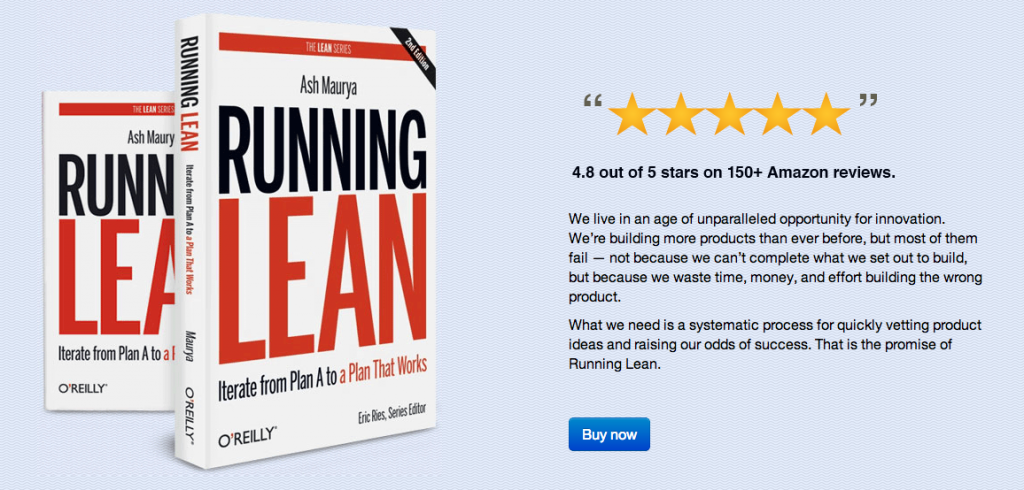 Ash Maurya is the author of one of the leading books for entrepreneurs: Running Lean. As the book’s webpage states:
Ash Maurya is the author of one of the leading books for entrepreneurs: Running Lean. As the book’s webpage states:
“Ash is praised for offering some of the best and most practical advice out there for entrepreneurs. He challenges the notion that start-ups should plan based on gut, intuition and luck. Instead he applies a systematic process for rigorously stress testing your ‘Plan A’ until you achieve a plan that works.
Ash Maurya is the founder of Spark59. He has launched several startups, including successful ventures such as WiredReach. Through his Running Lean workshops, he’s worked closely with entrepreneurs to help them test and refine their vision. Ash holds mentor roles with startup accelerators around the world such as TechStars, Mozilla Foundation, Year One Labs, MaRS, and Capital Factory”.
When you discover Ash Maurya’s insights in the process of designing business models, you then understand the word ‘clarity’. In ‘Lean canvas’, this clarity shines in the way he explains the methodology as a prototyping and visualization tool, and also in the focus on problems, solutions and the role of earlyadopters. Moreover, Ash Maurya wonderfully explains a fundamental element in the iteration and learning processes in the search of our Business Model: the key metrics.
:: You have a deep knowledge on the functioning of Silicon Valley. As the cradle of world’s leading innovations, it seems like a sort of “Eldorado” for entrepreneurs. But, which part of the story is not being told in that tale? What must you do to succeed in Silicon Valley? In which sense is it different to other parts of the world?
When it comes to startup ecosystems, there is Silicon Valley, and there is the rest of the world. I liken the ecosystem in Silicon Valley to that of professional sports teams. An entrepreneur in Silicon Valley is like a professional athlete playing on a professional team. While they are always playing for the championship, each athlete has individual ranking, and the ecosystem tolerates failure towards that goal. For instance, Messi will always be a great player and sought after no matter where he plays.
The rest of the world is not that forgiving towards failure and there’s much more at stake being an entrepreneur anywhere else. Personally, I’m more interested in seeing entrepreneurship thrive outside Silicon Valley.
:: The word “entrepreneur” is being one of the most heard of in our crisis. It seems the solution to every problem but it’s surely not that simple. Regarding firm creation, is quantity more important than quality? What do we need to build a dynamic and innovative ecosystem in a country like Spain?
There is no other place like Silicon Valley and the biggest mistake other cities make is trying to mimic the valley. Instead, I encourage other parts of the world to find their own identity and create local entrepreneurs who are in the best position to understand the unique dynamics of customers and markets in the region.
With the advent of the Internet, Open Source, and Cloud Computing, we have more power than ever at our fingertips. It is cheaper, easier, and faster than ever to build products and be an entrepreneur. That said the success rate of startups hasn’t increased. This is why I particularly excited about new approaches like the Lean Startup which provide entrepreneurs a less risky way to raise their odds of success.
:: We find your Lean Canvas innovations of great importance, since they cover key issues that were not explicitly covered in the original Osterwalder’s Canvas Model. Why would you recommend the use of Lean Canvas over other alternatives?
Before I address the original canvas, let me be clear that I view the real enemy not as “Lean Canvas vs Business Model Generation Canvas”, but creating a canvas versus not or worse spending months writing a business plan.
As to my motivations for creating Lean Canvas, I was in search of documenting a plan that was actionable while staying entrepreneur-focussed. The metaphor I had in mind was that of a grounds-up tactical plan or blueprint that guided the entrepreneur empirically from ideation to building a successful startup.
A startup is fundamentally about systematic risk mitigation. I found the original canvas missing on items I’d consider very high in risk at the outset such as Problem/Solution definition, Key Metric (or Engine of Growth strategy), and Unfair Advantages (or defensibility story). Other items on the original canvas were either obvious (within the context of the startup) or latter stage concerns such as Key Partners.
I often get asked this question a lot so I wrote a blog post on the topic that I’d encourage you read if you’d like more details.
If still not convinced, I encourage you to create a canvas in both formats and use both until you have a preference for one over the other.
:: Some entrepreneurs work during months on their Business Plan just with their hypothesis, trying to jump into the market without any kind of validation nor iteration. What would you say to those entrepreneurs?
Studies have shown that entrepreneurs who find success, do so by drastically changing their original plans along the way. The perfect plan is a myth. Instead, entrepreneurs should view the original plan as a best-guess and formulate a bunch of experiments to empirically test the riskiest parts of the plan first.
:: Others start with an original idea but they stick so much to it that they are not capable of changing directions, since they would interpret it as a ‘failure’. How would you convince them on being more flexible on their initial ideas and being able to pivot as they learn from iteration?
There is a reason the hockey-stick curve is largely flat at the beginning. It’s not because the founders were dumb or not working hard enough but that finding a business model that works starts with lots of things that don’t. Those that run away from failure by failing to acknowledge it are missing out on a huge learning opportunity that ironically will enable them to succeed faster. Hidden in these failures are the real gems (or root causes) that when understood lead to breakthrough insights.
:: Some entrepreneurs we work with focus their efforts in the ‘product definition’ and the search for the ‘best solution’. However, you have proposed a new way of looking at this problem: “Your product in not the product. Your product is a business model. Your job, as an entrepreneur, is to find a business model in which all the pieces fit” Can you summarize us why? What do you mean by a “business model in which all the pieces fit”?
I used to view the product (my solution) as king and the business model as something investors care about. But after building many elegant solutions and not finding the market success I was expecting, my perspective changed. The real product is a working business model, not just the solution.
This realization was particularly empowering because it meant I could apply the same product-development principles to build my business. For instance, the Lean Canvas is nothing more than the divide-and-conquer technique used to take a complex problem and split it into its component pieces. Each piece can be tackled separately but it’s like a jigsaw puzzle that needs to fit together at the end.
:: Why do most entrepreneurs think about solutions but not about problems? This is usually the beginning of the end, but it is still the usual behaviour. Which is the importance of correctly identifying our clients’ problems?
Entrepreneurs are naturally most passionate about their solution because that is what triggers our creative addiction and what we are best at doing. The second principle I describe in my book (after divide-and-conquer) is tackling the riskiest (not easiest) parts of the business model. For most products today, given enough time, money, effort we can build what we set out to build. That part isn’t all that risky. But finding customers and markets is.
:: We find a great difficulty in correctly defining the ‘Unique Value Proposition’. Which elements must it contain and how must we define it?
At a fundamental level, the Unique Value Proposition is a promise you make to customers that they care about. It is the intersection of the customer’s #1 problem and your solution i.e. how you solve it. More specifically, try to think of the finished story benefit the customer would realize after using your product. So for instance, on a job-board site, a good UVP might promise finding a dream job within some time constraint.
 :: Guy Kawasaki told us in a past interview: “there are always two guys/gals in a garage somewhere plotting your demise”. How can an entrepreneur fight that constant threat?
:: Guy Kawasaki told us in a past interview: “there are always two guys/gals in a garage somewhere plotting your demise”. How can an entrepreneur fight that constant threat?
On the Lean Canvas, this would be addressed by the Unfair Advantage box. Most entrepreneurs don’t have a true unfair advantage on day one. While scary, this is actually okay because at the earliest stages you are still searching for a business model and not many people pay attention to you. It is only when you have found something that is working that your unfair advantage comes into test. By then you should have discovered where your unfair advantage needs to come from and ideally started developing it. As an example, even Facebook didn’t have an unfair advantage on day one. There were lots of bigger, better funded social networks already up. But Mark Zuckerburg knew his unfair advantage would need to come from large network effects and he followed a different implementation strategy to get there.
:: In Spain, the drought of credit has launched entrepreneurs into the search for investors. When do you think a start-up is ready to face the ‘First Round Financing’?
It is important to understand that investors are in business of making money and they don’t really care about your solution but your business model. To them you are a risk profile and they need to hedge their bets accordingly. The ideal time to seek first round financing is when you have some empirical evidence (even small) that you are making progress towards unlocking a business model that will not only work but also give them a healthy return on their investment.
Going back to what I said earlier, we live at a time where it is cheaper than ever to build products and gather this evidence. The Lean Startup and techniques in my book specifically describe how to do this. I encourage entrepreneurs to start with customers before investors which makes the process a lot less painful (and faster).
:: One last thing: could you please complete the following sentences?
1.- My biggest failure…Building a product in stealth and mentally rationalizing why my approach was superior and would win at the end.
2.- From that failure, I learnt…First-time entrepreneurs have the gift of obscurity. The biggest challenge we have isn’t getting our ideas stolen but heard.
3.- For me, success is…Freedom to pursue a life of purpose.
4.- An author that is always for me and a reference…I read too many books to have a single author – Seth Godin, Ries/Trout, Eric Ries, Clayton Christensen, etc.
5.- For being productive, I use…A model I describe in my book as: “right action, right time”. At any given point in time, there are only a handful of actions that drive the largest results. Focus on those and ignore the rest.
6.- The purpose in my life…Help more entrepreneurs succeed.
7.- I worry about…Being wasteful with my time. Time is our scarcest resource.
8.- A blog I always follow…Again too many to list: ASmartbear, OnStartups, StartupLessonsLearned, etc.
9.- An idea every entrepreneur has to know…Have faith in yourself, not your idea.
10.- A place to achieve inner peace…Yoga, family, cooking.
:: Thank you very much!
This interview has been done by José Antonio de Miguel, a great Spanish expert on Lean Startup with a deep knowledge of Ash’s work.


